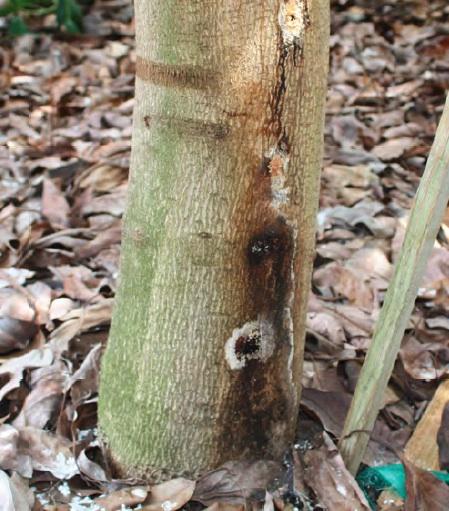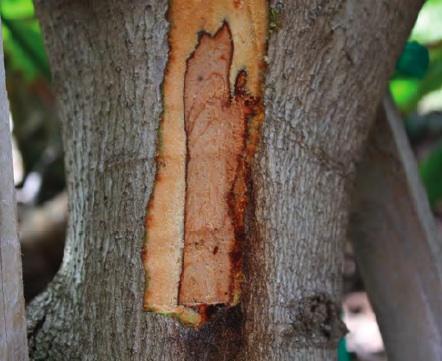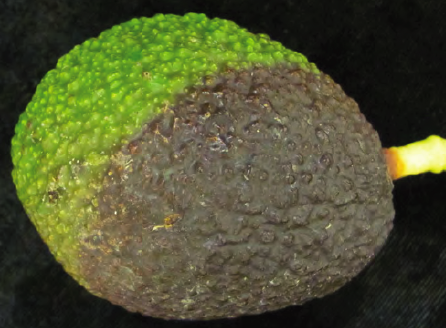Phytophthora mengei (P. citricola) and P. cinnamomi have been associated with trunk canker and collar rot of avocado. The pathogen infects the crown, lower trunk and limbs of older trees. The disease develops after crowns, limbs, or trunks become infected through wounds, such as injuries from equipment, pruning, vertebrate chewing, and wind damage. Spore spread and disease development are favored by excess soil moisture and wet conditions. Contaminated equipment and tools that wound healthy trees can cause a new infection. The pathogens also cause avocado fruit rot.
Avocado trunk canker disease symptoms
- Avocado trunk canker and collar rot usually originate at or below ground level but can occur higher above ground, especially where trunks or lower limbs have been wounded.
- The canker appears as a region of dark bark that often exudes red resin, which becomes brownish to white and powdery as it dries. The lesion infects the inner bark and outer layer of wood, killing cambium and phloem.
- Discoloration rarely extends deeper into wood than the outer woody layer.
- Affected trees show a gradual loss of vigor and decline of the canopy. Foliar symptoms are similar to those caused by Phytophthora root rot.
- Diseased fruit have a distinct circular black area that usually occurs near the bottom or lowest spot on the fruit.
- Internally, the rot extends into the flesh, darkening it in the same pattern as on the affected surface.
- Affected fruit are often touching the soil or are hanging on low branches.


